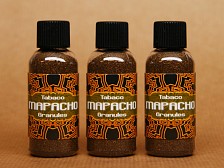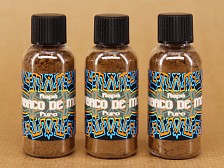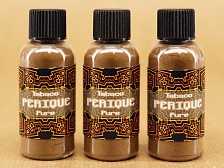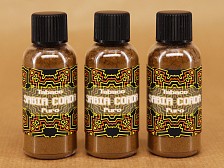
|
Arapiraca Powder
|
Due to its high nicotine content and grounding effects, Arapiraca Tabaco in powdered form is favored in indigenous spiritual rituals that focus on energy alignment and mental clarity. |
4 Forms |

|
Mapacho Granules
|
Sifted Mapacho granules offer a practical option for preparing small, single portions of Mapacho juice for nasal use |
3 Forms |

|
Mapacho Powder
|
Mapacho is made from Mapacho Masos, Nicotiana rustica, which is about 20 times stronger than our traditional Tabaco, Nicotiana tabacum. This powder is made from fermented Mapacho logs. |
4 Forms |

|
Moi Powder
|
Tabaco de Moi is one of the most beautiful of all Rustica types available. The scent is just divine. Used alone or mixed into ashes this wonderful Tabaco heightens the senses and helps to put the user into a relaxed state of being. |
3 Forms |

|
Perique Powder
|
The rare and famous Louisiana Tabaco is known for its dark, black colour and unique flavour when cured. Perique is a spice Tabaco, usually used in Virginia blends. It has a dark, oily and almost wet appearance when cured, with a taste of pepper and figs. This can be a perfect and unique ingredient to create ones own Rapé blends, or to blend into an existing Rapé to give it a more deepening and grounding effect. |
2 Forms |

|
Rustica Powder
|
Nicotiana rustica, commonly referred to as Rustica Tabaco, is one of the most potent and sacred varieties of Tabaco used by indigenous tribes across the Amazon and Andes regions. While it serves as the foundation for Mapacho Masos, its use in its raw, unfermented form is equally significant. |
4 Forms |

|
Sabia Powder
|
This particular type of Tabaco is highly prized among Rapé makers for its strength and neutral flavour, making it a preferred choice for creating powerful and balanced Rapé blends. |
4 Forms |